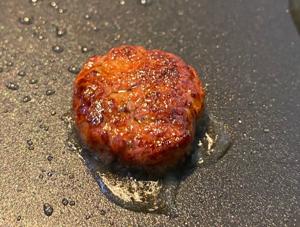
By Isobel Williams via SWNS
Genetically altered mold could be the future of food, providing tasty, healthy and environmentally friendly snacks.
New research suggests that modifying genes in fungi could create cruelty-free products that are healthy for consumers and healthier for the environment.
Scientists at the Biosciences Area at Lawrence Berkeley National Laboratory are exploring the many possibilities for new flavors and textures that can be made by modifying the genes already present in fungi.
For the study, published in Nature Communications, the team looked at a multicellular fungus called Aspergillus oryzae, also known as koji mold, that has been used in East Asia to ferment starches into sake, soy sauce, and miso for centuries.
They then used their gene editing system to make modifications that elevated the mold as a food source.
Chef-turned-bioengineer Dr. Vayu Hill-Maini said: “I think it’s a fundamental aspect of synthetic biology that we’re benefiting from organisms that have evolved to be really good at certain things.
“What we’re trying to do is to look at what is the fungus making and try to kind of unlock and enhance it.
“And I think that’s an important angle that we don’t need to introduce genes from wildly different species.
“We’re investigating how we can stitch things together and unlock what’s already there.”
First, the researchers focused on boosting the mold’s production of heme – an iron-based molecule that is found in many lifeforms but is most abundant in animal tissue, giving the meat its color and distinctive flavor.
Next, they punched up the production of ergothioneine, an antioxidant only found in fungi that is associated with cardiovascular health benefits.
After these changes, the once-white fungi grew red, and with minimal preparation – removing excess water and grinding – the harvested fungi could be shaped into a patty, then fried into a ‘tempting-looking burger’.
Professor Jay Keasling from UC Berkeley said: “By unlocking koji mold through the development of these tools, we are unlocking the potential of a huge new group of hosts that we can use to make foods, valuable chemicals, energy-dense biofuels, and medicines.
“It’s a thrilling new avenue for biomanufacturing.”
In the future, the team hope to make the fungi even more appealing by tuning the genes that control the mold’s texture.
Given his culinary background, Dr. Hill-Maini is keen to ensure that the next generation of fungi-based products are not only palatable but truly desirable to customers, including those with sophisticated tastes.
He added: “We think that there’s a lot of room to explore texture by varying the fibre-like morphology of the cells.
“So, we might be able to program the structure of the lot fibers to be longer which would give a more meat-like experience. And then we can think about boosting lipid composition for mouth feel and further nutrition.
“I’m really excited about how can we further look at the fungus and, you know, tinker with its structure and metabolism for food.”

